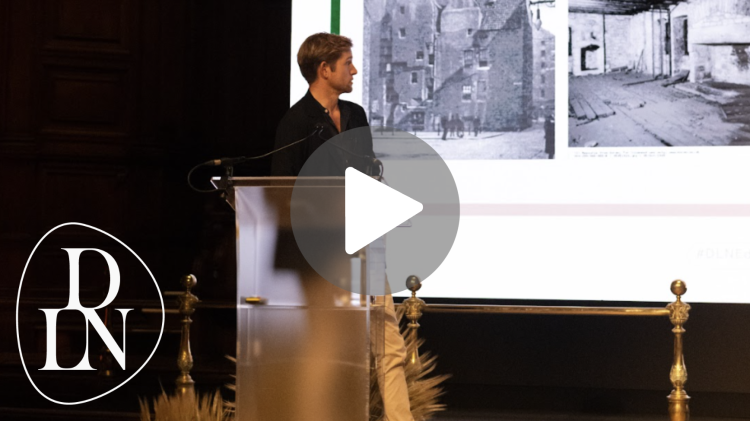How can architecture build community? For architect Gunnar Groves-Raines, the answer lies in blending bold innovation with a deep commitment to community. As the Director of GRAS, Gunnar has spent years advancing conservation and community-centric design, redefining the role of architecture in creating meaningful, place-specific experiences.
The firm—founded by Gunnar’s parents as Groves-Raines Architects—has long touted conservation in its deft practice of adaptive reuse. Recent examples include the thoughtful restoration of Lamb’s House, a Grade-A listed 17th-century cottage on Edinburgh’s Leith Harbor which the firm restored to a family home, and Buff, a design-forward nail salon set in a reimagined Victorian-era building, both of which DLN Members had the opportunity to tour during our Summit.
Since the evolution of a more avant-garde arm of the studio and the subsequent merging of these divisions under one GRAS umbrella, these design values have come to impact every element of the firm’s business and output. “Whether it’s a building or something people can hold in their hands, we want to create things that people love,” says Gunnar. “If they love them, they’ll look after them—there’s an inherent sustainability.”
The pinnacle of the GRAS spirit is perhaps best represented by Custom Lane, a nonprofit design hub in Scotland that integrates a café, gallery, store, working, and event spaces in a pragmatic application of GRAS’s penchant for interdisciplinary collaboration and community-focused design. “With Custom Lane, we wanted to create more than just a space,” Gunnar explained. “It’s about cultivating a culture of creativity and supporting the incredible talent we have in Scotland.”
At Custom Lane, that support can take a more traditional route, in the form of mounting artists’ gallery exhibition, an interdisciplinary one, in encouraging—and providing space for—creative collaboration, or even a deeply pragmatic one, with the inclusion of a tool library onsite, providing access to literal tools for creativity that might otherwise be inaccessible.
At this year’s Design Leadership Summit, Gunnar discussed the studio’s unique approach to balancing conservation and innovation to create boundary-pushing projects, ideas, and spaces. By uniting tradition with forward-thinking design, GRAS continues to shape architecture’s role in building meaningful connections and sustainable communities, underscoring the idea that architecture can—and should—be a force for progress and connection.
